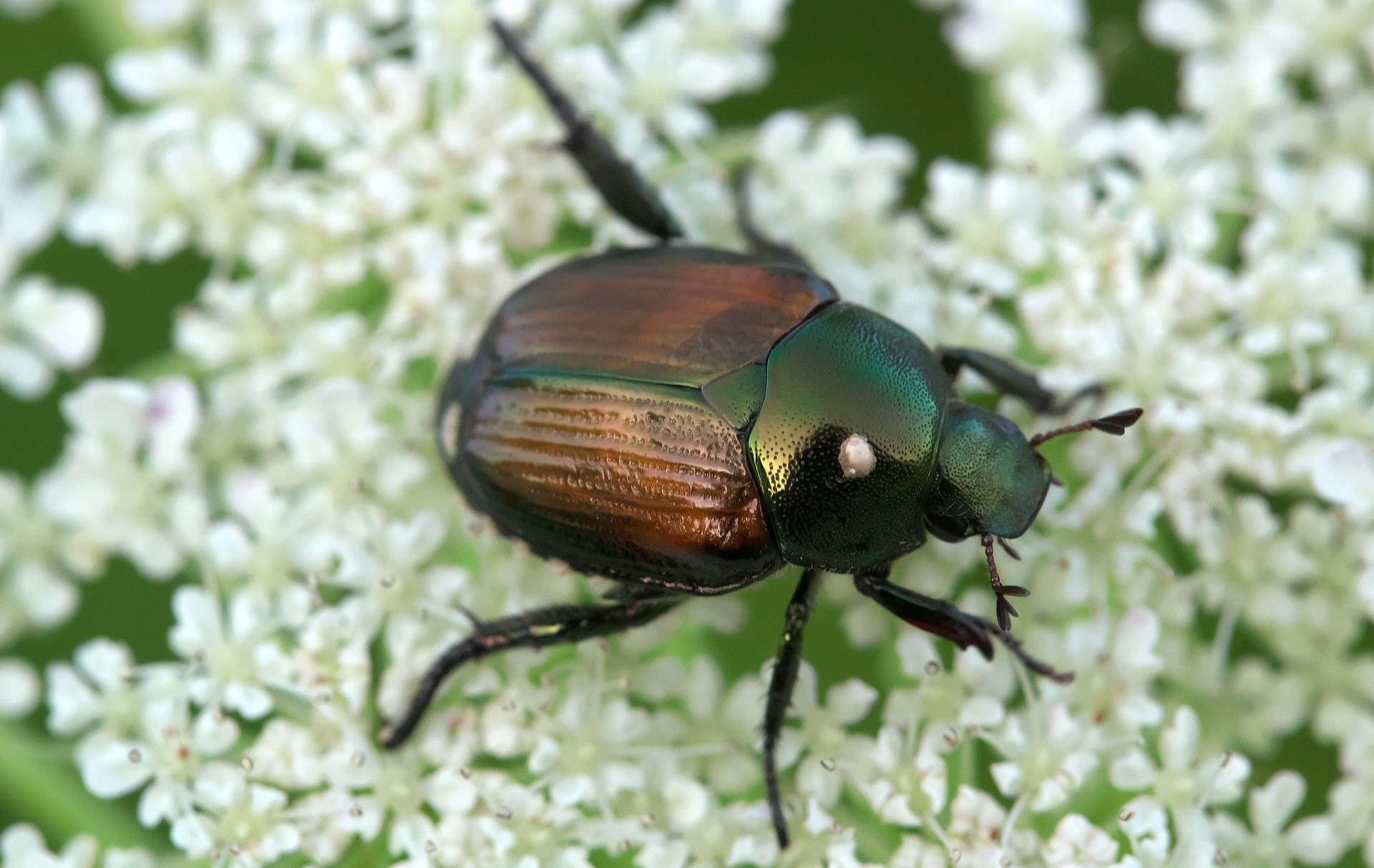One of my sustainability goals is to feed my chickens a significant portion of their daily rations from my garden. They have lots of time to free range and forage for fresh food, but I do give them some organic chicken feed daily.
This food (in pellet form) is processed, pricey and comes in a plastic bag. All things I try to limit in my household. So, I’ve been thinking of ways to incorporate producing some chicken feed into my homesteading plans.
Last week, I started to meet this goal, although not at all in the way I’d intended. Several times lately I’ve given my flock a big dose of fresh protein — in the form of Japanese beetles.
These pests have invaded my garden. They’ve congregated to eat and fornicate. They seem to do both activities continuously and simultaneously — so much so that when my sister noticed the infestation in my garden she exclaimed, “my God, they’re copulating!”
If you are lucky enough to be unfamiliar with these beetles: the have iridescent green bodies with shiny copper wings and they can decimate plants.
These invasive bugs are known for eating just the soft part of leaves, leaving the veins to look like skeletons. In my garden they’ve primary chosen evening primrose to damage. These flowers grew as weeds, and wanting to preserve them I carefully left them in as I prepared my garden beds.
Now they are mutilated, holes in their leaves and sweet yellow flowers, covered not only in the pests themselves but also in their black droppings.
To try to save a few evening primroses which were small and so not yet attacked (as well as other plants Japanese beetles enjoy) I’ve spent several hours throughout the last week or so picking them off the plants and dropping them into a jug of water.
This task is easiest when it’s cool in the mornings, as they are more likely to fly in the hot afternoons when they are most active. When it is cool, they drop off into my container with some ease. Even though not difficult, it is not a pleasant task.
As I’ve learned, Japanese beetles were first noted in the U.S. in a nursery in New Jersey in 1916. Since then, they’ve spread to most states, although some purportedly have been able to keep populations down.
Populations can increase quickly, as females can lay 40-60 eggs (one to three at a time burrowed into soft moist soil) in her roughly 30-45 day life as an adult. The eggs grow into larva which molt several times in the soil (often damaging turf or other roots) and emerge the following year.
There are wasps who act as natural controls — some by attacking the adult beetles and others by parasitizing the grubs. There is also a nematode which can aid in Japanese beetle population control.
A few articles I read referenced parasitic wasps as the natural check which keeps these beetles from becoming pests in their native range in Japan.
Plants Japanese beetles love to demolish here include grapes, raspberries, roses, maple, soybeans, corn, stone fruit among many others on a list of over 300 host plants.
I read planting geraniums can make manual removal of the beetles easier, because they are partial to its flowers, which contains a chemical that makes the bugs dizzy, so they fall off and are easy to pick up or sweep up. I, however, have not tried this method myself.
Although I would prefer they not be available, my chickens appreciate these homegrown meals.




